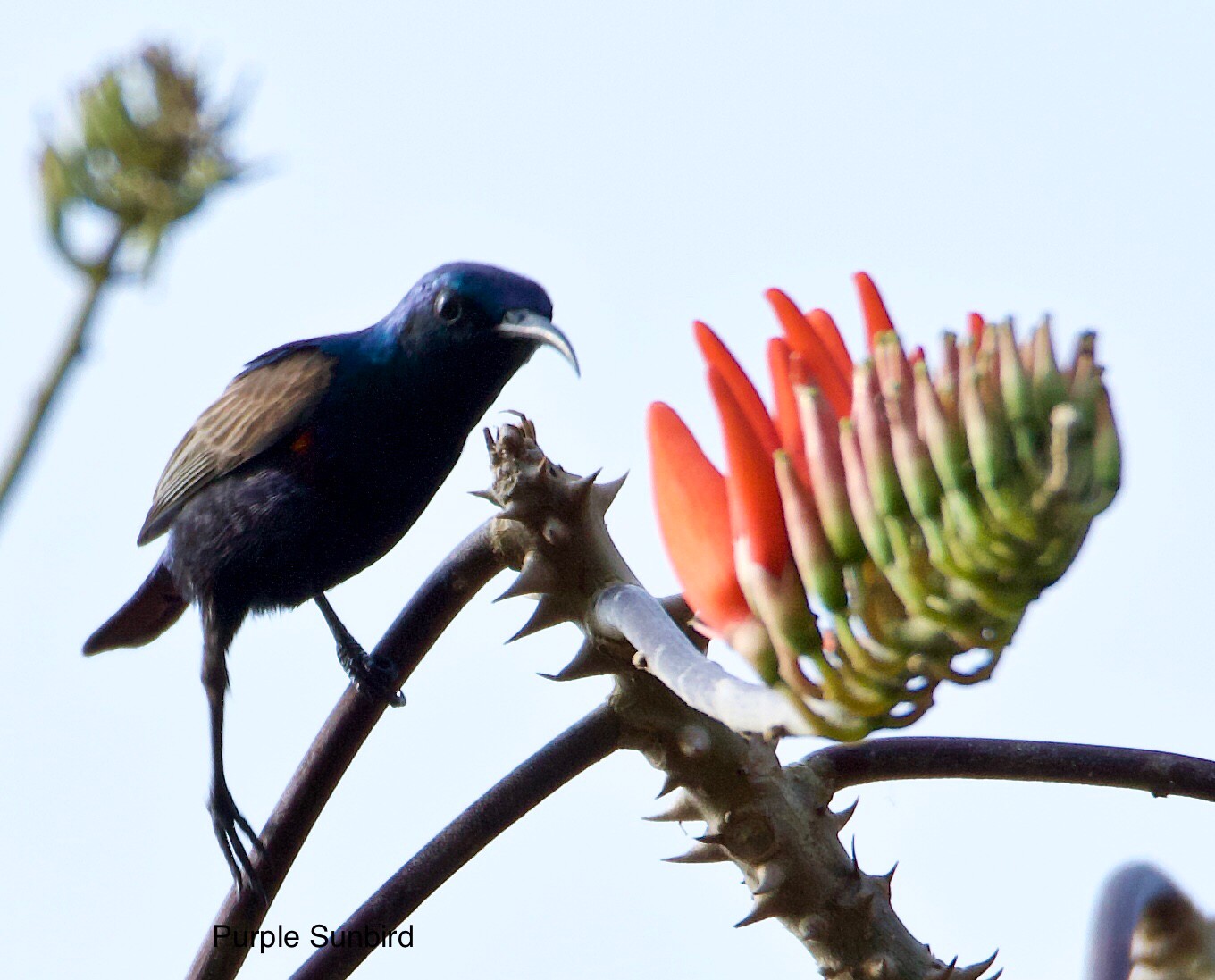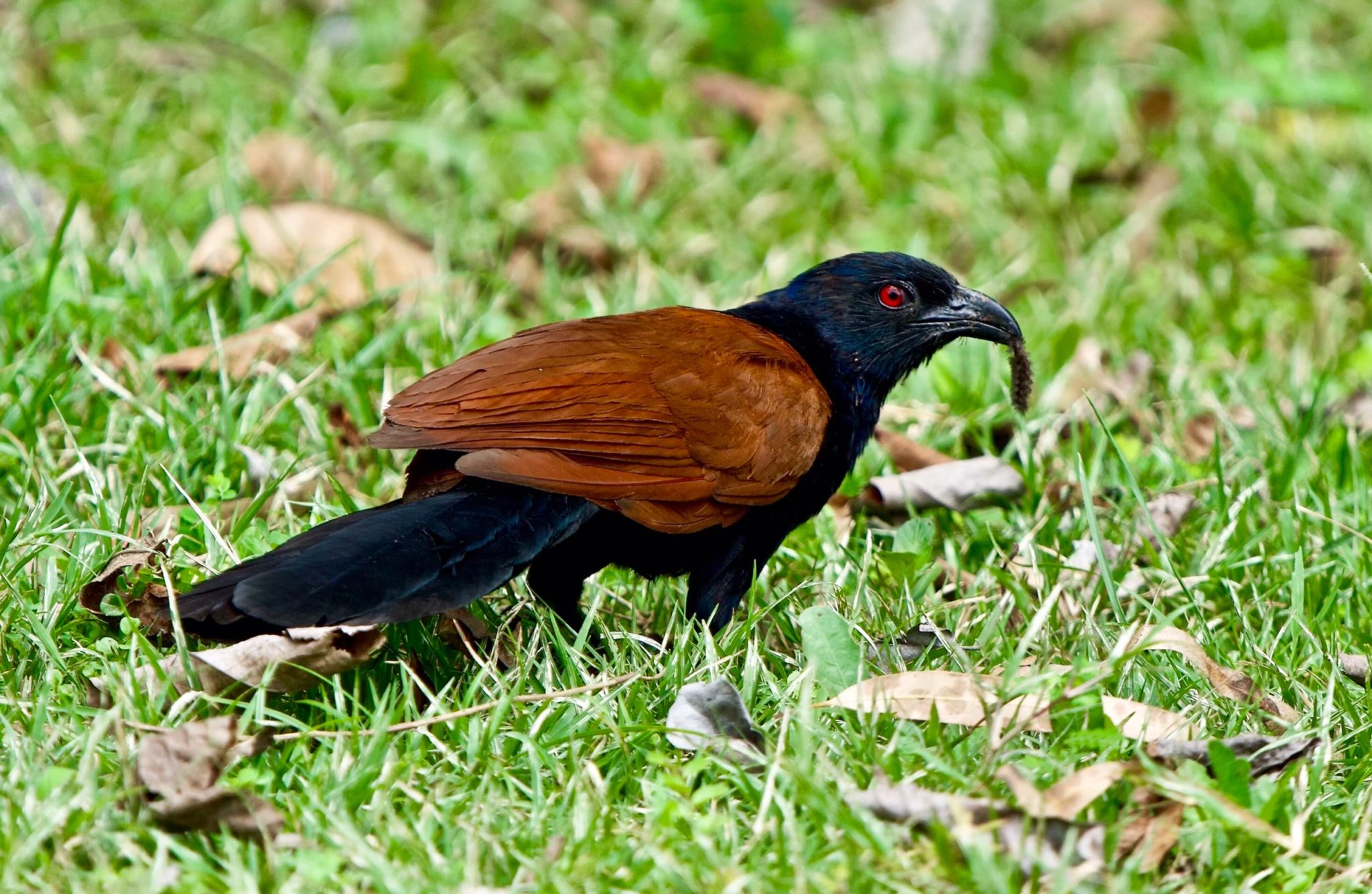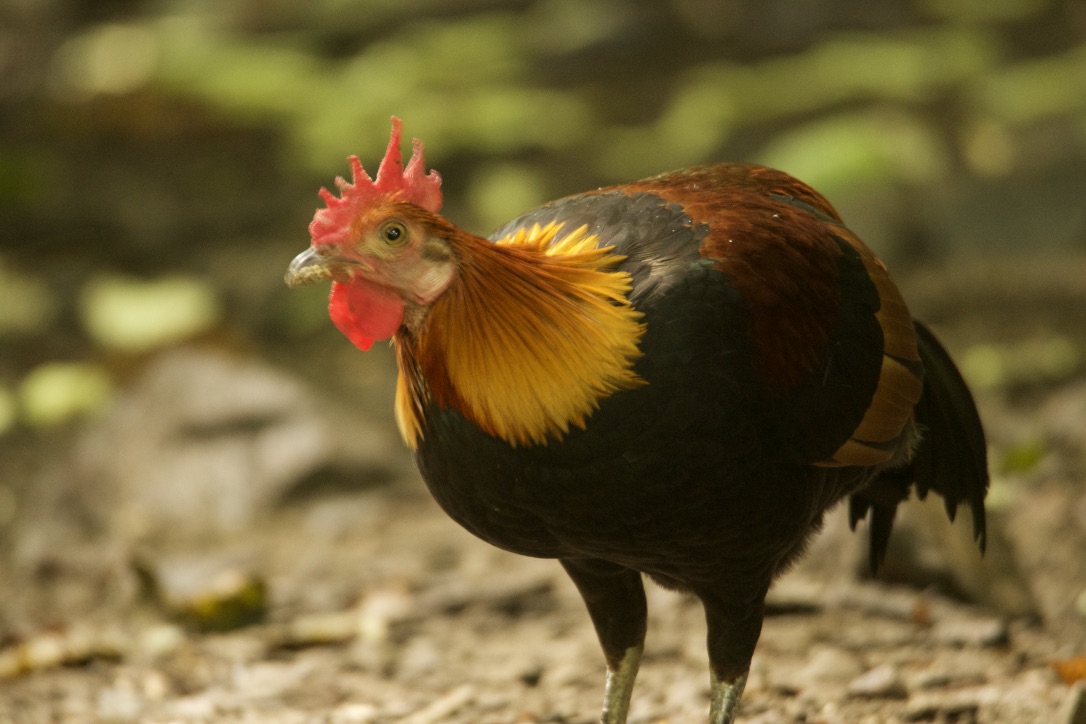Cinnyris asiaticus
Size: 10 – 11cm
Weight: 5 – 11g
Found: The species is distributed widely from West Asia through the Indian subcontinent and into Southeast Asia. They are resident birds in most parts of their range and do not move large distances. They are found in thin forest and garden land, including those in dense urban areas.
Description: This small sunbird has a relatively short bill, a dark and short square ended tail with distinctive sexual dimorphism. Less than 10 cm long they have a down-curved bill with brush-tipped tubular tongues that aid in nectar feeding.
The male is glossy metallic bluish to purplish black on the upper parts with the wings appearing dark brown. The breeding male also has underparts of the same purplish black, but non-breeding males may show a central streak of black on yellow underparts. In the breeding plumage, the male can be confused with the syntopic Loten’s sunbird which has a long bill and a distinctive broad maroon band on the breast. Breeding males will sometimes show their yellow pectoral tufts in displays. There is a patch of bright blue on the shoulder of breeding males. The maroon shine on the feathers of the collar around the neck is visible mainly during the breeding seasons.
Females are olive brown above with a yellowish underside. There is a pale supercilium beyond the eye. There is a darkish eye stripe. The throat and breast are yellow, becoming pale towards the vent. The outer tail feathers are tipped in white both in the male and female.
Diet: Like other sunbirds they feed mainly on nectar, although they will also take insects, especially when feeding young.
Comment: The nest is a pouch made of cobwebs, thin strips of vegetation, lichens and bark. The entrance hole on the side is often shaded by an overhanging projection. The nest is built almost entirely by the female. The nest material is not woven and most of it is held together by cobwebs. About five to ten days may be taken in the building of the nest. The inner cavity is expanded by the bird by opening its wing and turning around on the inside.





